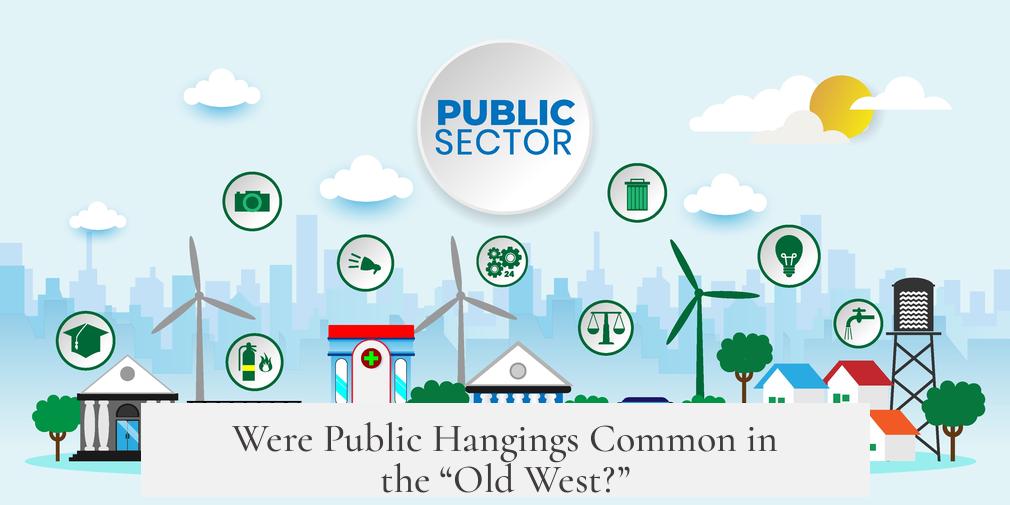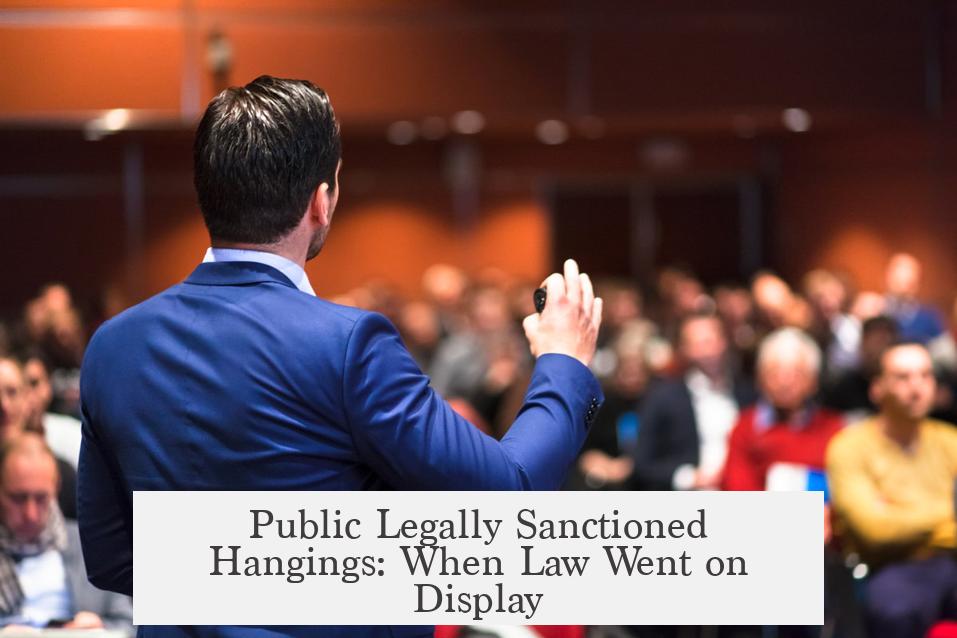Public hangings in the “Old West” were not common as state-sanctioned events but often occurred through vigilante justice, sometimes openly and sometimes in secret. Two main types of hangings existed: lynchings by vigilance committees and legally authorized executions. Both types could be public or private, but the context defined their nature and visibility.
Vigilance committees carried out many lynchings, which were sometimes public spectacles intended to intimidate criminals and assert social control. These groups often operated at night to protect identities, minimizing legal repercussions. However, there were exceptions. For example, the 1850s San Francisco hangings by vigilantes were public events, attended by hundreds, making prosecution unlikely. This suggests a complex balance between secrecy and the desire to enforce order through visible means.
Legally sanctioned hangings generally occurred within prison walls. Executions inside penitentiaries offered more control and security. Public executions by law were unusual and eventually phased out. Nevertheless, a few notable public state-sanctioned hangings did happen.
Virginia City, Nevada, provides key examples. Two public legal hangings took place there, in 1868 and 1877, each using wooden gallows with trap doors. The 1868 hanging drew around 4,000 spectators, including Mark Twain, who was disturbed by the event and later spoke against capital punishment. The 1877 hanging took place at the crime scene, a saloon on the Barbary Coast. This act was a deliberate public warning aimed at reforming the lawless district, which led to a decline in illicit business activity in that area.
In summary, while secret or semi-public lynchings by vigilantes were relatively common in certain Western communities, openly public legal hangings were rare. Public executions served more symbolic and deterrent purposes when they did occur, rather than being routine events.
- Two types of hangings: vigilante lynchings and legal executions.
- Vigilante hangings sometimes widely publicized to intimidate.
- Legal executions usually private, inside prisons.
- Rare public legal hangings occurred in places like Virginia City.
- Public hangings had strong social and political messages.
Were Public Hangings Common in the “Old West?”

Public hangings in the Old West were not as common as popular culture imagines. While the image of a boisterous crowd gathered around a gallows to witness a deadly spectacle certainly exists in dime novels and Western movies, the true history reveals a more nuanced reality. Public executions did happen, but they were more the exception than the rule. Let’s dive into the two main types of hangings that shaped the American West’s rough and tumble justice system—lynchings by vigilance committees and legally sanctioned executions.
The Two Faces of Hanging Justice: Lynchings and Legal Executions
First off, it’s important to understand there were two main species of hangings in the Old West. On one hand, we have lynchings, extrajudicial killings often carried out by local vigilance committees. On the other, there were legally sanctioned executions, where the law officially sentenced a criminal to death. Both types could be public or private, but their underlying purposes and contexts were wildly different.
Vigilance Committees and the Secret Lynch Mob
Lynchings by vigilance committees are probably the ones you picture when imagining the “wild justice” of the Old West. These committees aimed to impose order in places where formal law enforcement was weak or corrupt. Interestingly, these executions often happened under cover of darkness to hide who pulled the noose.
Why cloak their identity? Simple. They risked murder charges if caught.
However, there were noteworthy exceptions, such as the infamous San Francisco executions in the 1850s. These were pretty much mad public spectacles, with hundreds of executioners brazenly attending in daylight—a show of force clearly meant to intimidate lawbreakers. That kind of open menace ensured no one really dared challenge the committees’ authority. These public lynchings served as a psychological tool, a violent display ensuring “bad elements” got the message loud and clear.
Legal Executions: Quiet, Yet Deadly
Legally sanctioned hangings were generally less theatrical affairs. Most of these took place quietly inside penitentiaries, away from crowds. This makes sense—escorting a prisoner to the gallows inside secured walls made it easier to control the event’s security and minimize public disorder.
Still, early on in the West’s development, executions outside penitentiaries did happen, but they were relatively rare.
Public Legally Sanctioned Hangings: When Law Went on Display

By far, the most fascinating cases of publicly sanctioned hangings took place in Virginia City, Nevada. This rough town—a hotbed of mining wealth and saloon culture—saw two notable public hangings that broke the norm.
- The 1868 Hanging: Approximately 4,000 people attended this event, turning it into more than an execution—it was a community event, complete with picnic lunches. Even Mark Twain showed up. However, Twain left feeling sickened by the grisly sight. This experience deeply influenced his opposition to capital punishment for the rest of his life.
- The 1877 Hanging: The second public execution took place right where the crime happened—in a notorious Barbary Coast saloon. The city leaders wanted to send a crystal-clear message that lawlessness on the Barbary Coast would no longer be tolerated. This hanging had a chilling effect on the red-light district’s rowdiness, with many businesses relocating to less conspicuous city-sanctioned areas.
These cases challenge the idea that public hangings were the everyday justice spectacle you see in popular myths.
So Were Public Hangings Actually Common?
Not really.
The typical scenario was that legally executed criminals met their fate in relative privacy inside prisons. Vigilante justice, while sometimes public, was often secretive and designed to protect the identities of those involved. Where public hangings occurred, they often had a specific strategic purpose—intimidation, social control, or sending a message to a wayward populace.
These exceptions became legendary precisely because they were unusual.
What Can We Learn from This?
For starters, the Old West’s justice system was as complex as its mythic reputation. The image of crowds cheering at every hangman’s noose is greatly exaggerated. Instead, public executions were rare and usually served a calculated societal role.
This clarity helps avoid myths about “wild” frontiers where lawlessness reigned and justice came with a side of carnival. Instead, you see communities and authorities struggling—and sometimes failing—to maintain order amid chaos.
Even figures like Mark Twain wear the scars of witnessing such moments, reminding us that justice’s dark displays have long-lasting impacts on society’s conscience.
Curious About the Modern Legacy?
Looking back at these events, one might ask: what does this say about our attitudes toward capital punishment today? Twain’s visceral nausea at the public hanging echoes today’s debates about the morality and effectiveness of the death penalty. The Old West’s sporadic public executions serve as historical anecdotes reminding us that justice’s form impacts how society perceives its fairness.
In short, public hangings in the Old West were neither routine nor random. They were tightly bound to the social fabric, strategic in message, and frequently shrouded in secrecy.
Quick Summary:
- Two types of hangings: vigilantism and legally sanctioned executions.
- Vigilante lynchings: often secret but sometimes boldly public to intimidate.
- Legal executions: mostly private within prisons, with a few notable public exceptions.
- Public hangings like those in Virginia City: rare events designed to send a message and maintain order.
- Mark Twain’s attendance: a unique eyewitness account that influenced his lifelong stance against capital punishment.
Next time you watch a Western with dramatic hanging scenes, remember: the reality was less about showmanship and more about complex power dynamics, fear, and social control. Sometimes, the truth is far more interesting than the legend.



